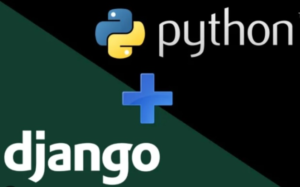Data science with Python involves the use of Python programming language and its associated libraries and tools for various stages of the data science process, including data cleaning, exploration, analysis, and visualization. Here’s an introduction to the key steps involved in data science with Python:
- Data Cleaning and Preprocessing: Before diving into analysis, it’s crucial to clean and preprocess the data. This involves handling missing values, dealing with outliers, removing duplicate entries, and converting data types as necessary. Libraries like pandas provide powerful tools for data cleaning and manipulation.
- Exploratory Data Analysis (EDA): EDA involves gaining insights and understanding the data by performing summary statistics, data visualization, and generating descriptive statistics. Libraries such as pandas, NumPy, and matplotlib can be used for exploring the data and visualizing relationships and patterns.
- Data Visualization: Python offers several libraries for creating meaningful visualizations of data. Matplotlib, seaborn, and Plotly are popular libraries for creating static and interactive visualizations. These libraries enable you to plot histograms, scatter plots, bar charts, heatmaps, and more, providing insights into the data.
- Feature Engineering: Feature engineering involves creating new features or transforming existing ones to improve the performance of machine learning models. This step includes techniques like one-hot encoding, feature scaling, handling categorical variables, and creating derived features based on domain knowledge. Libraries like pandas and scikit-learn provide utilities for feature engineering.
- Machine Learning Modeling: Python has a rich ecosystem of libraries for machine learning modeling. Scikit-learn is a widely used library that offers a comprehensive set of tools for various machine learning tasks, including classification, regression, clustering, and dimensionality reduction. TensorFlow and PyTorch are popular libraries for deep learning and neural network models.
- Model Evaluation and Validation: Once the models are trained, they need to be evaluated and validated using appropriate techniques. Cross-validation, performance metrics (such as accuracy, precision, recall, and F1 score), and techniques like confusion matrices and ROC curves help assess the performance of the models. Scikit-learn provides functions for model evaluation and validation.
- Model Deployment and Productionization: After selecting a final model, it can be deployed for production use. Python offers frameworks like Flask, Django, or FastAPI for building web-based APIs to serve predictions. Containerization tools like Docker and deployment platforms like AWS or Heroku can be used to host and scale the deployed models.
Throughout the data science process, Python libraries like pandas, NumPy, scikit-learn, matplotlib, seaborn, and Plotly are commonly used for their data manipulation, analysis, and visualization capabilities. Jupyter Notebook is a popular environment for interactive data analysis and documentation.
To get started with data science in Python, it’s recommended to explore online tutorials, books, and resources that cover the fundamentals of Python programming, data manipulation with pandas, visualization with matplotlib/seaborn, and machine learning with scikit-learn. Practicing on real-world datasets and participating in Kaggle competitions can further enhance your skills and understanding of data science with Python.




